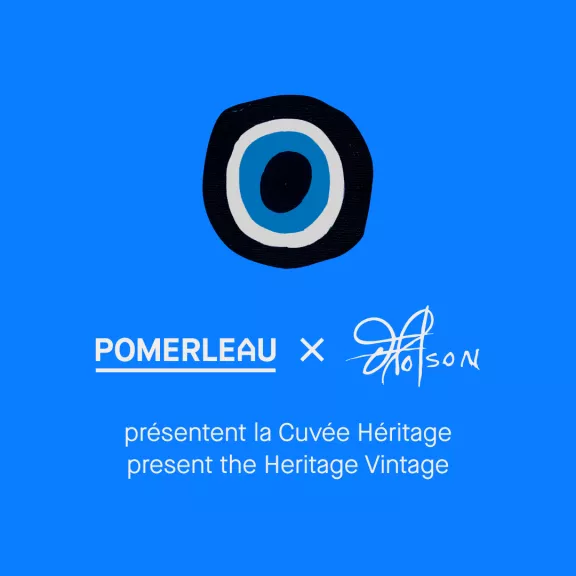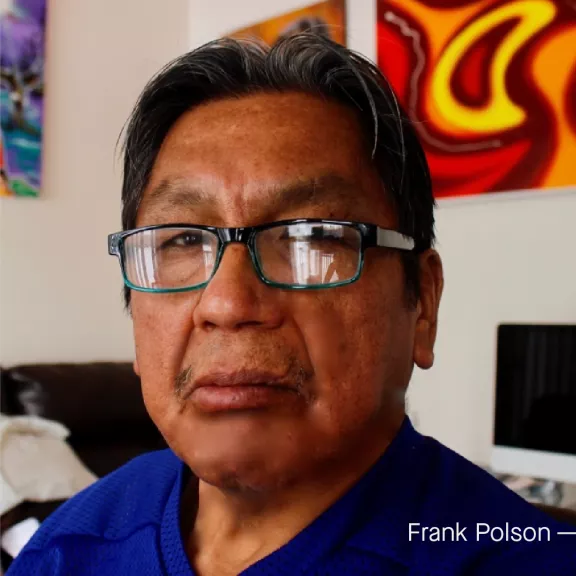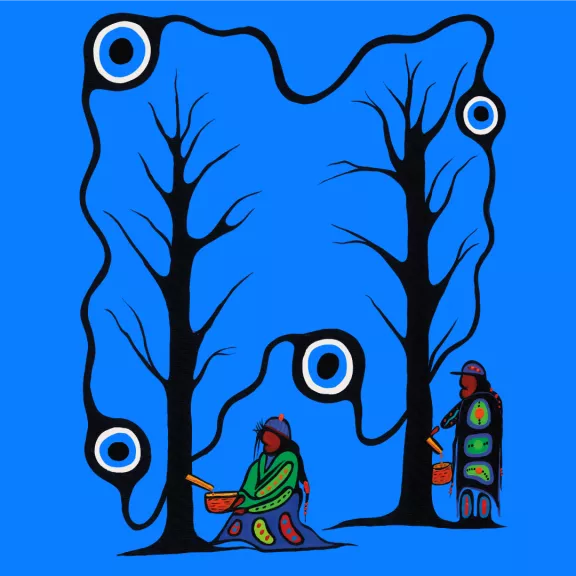
This year, we chose to honour the history of maple syrup and the people who discovered it by sharing the story of its origins. The First Nations created a legacy that now rests at the heart of Canadian culture and family traditions. It is in a spirit of recognition, reconciliation, and collaboration with the First Nations, that we have created this special edition, which we named Heritage.
We are delighted to have collaborated with Algonquin First Nation’s painter, Frank Polson on this project. He created the artwork Spring Sap, to illustrate our Heritage Edition. Polson is internationally recognized, drawing praise for his traditional Woodland painting style and colorful work. Polson’s work is inspired by the stories he was told as a young boy. Here is his story:

When Frank Polson was young, he and his father trapped in the early morning. Brilliant orange and yellow sunrises painted the skies during their ventures, turning blue as the morning eased on. Polson sketched the skies.
The Indigenous painter grew up in the Long Point First Nation community in Quebec. For the last 69 years, the community has been his home. Prior to becoming a painter, Polson held various positions. He never thought he would become an artist.
In 1993, Polson went to a federal institution in Kingston, Ontario. He was sentenced to five years for charges related to drugs and alcohol. While in prison, Polson began to read about Norval Morrisseau, an artist who specialized in Woodland paintings.
I fell in love immediately with the Woodland Art. Morrisseau told us stories about his heritage, culture, and the legends. It was an easy way to try and reach out to people and help them understand who we are as First Nations people.
While in prison, Polson worked at a paint shop. He asked the supervisor if he could have some paint to work on a canvas. Other inmates supported his work, providing him with connections. Polson had his first exhibition in Toronto a few months after he was released from prison.
Art changed Polson’s life for the better. “I wanted to live a good life, so I decided to try it and I think I have managed to capture some of it in my work. It’s a healing method.”
Polson works to extend this sentiment to the elders within his community. He uses stories and legends that his grandma, father, and uncle told, to influence his art. He wants to show the elders that it is okay to share their heritage with others.
For Pomerleau, Polson drew inspiration from Indigenous origin stories about the discovery of maple syrup to create his artwork.
There are different stories about maple syrup’s origins. Polson remembers the story of the Iroquois Chief who tossed his tomahawk towards a tree in the Winter. The tomahawk stuck and he left it until Spring. When he came back in the Spring, the tree was warm, and the sap started running.

Since the First Nations were the ones to discover the sugar and drink, I thought I would put kids in the painting to show the tradition that gets passed down. That’s why I put the young girl with the basket and the young boy in the painting. I don’t show smiling faces or sad faces, I put in colour to heal from bad times.
The artwork that Polson creates is a recording of his heritage. His work depicts the relationships Indigenous peoples hold with nature.
My dad told me we are connected to the animals and the trees. A lot of First Nations share their heritage orally, but I think it is important to start recording who we are and why we are here.
Since starting his journey as an artist, Polson has seen great success. He wants to share these achievements with emerging artists by offering them support. Polson wants this type of work to go on forever.
Artwork is the national language of the world.